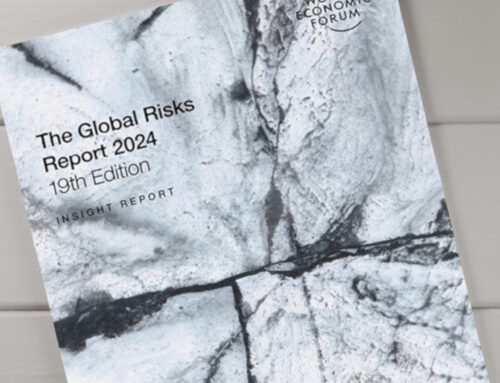

Zurich Advocacy Resilience Q&A featuring SBP’s Reese May
Share this
Recently, Zurich Advocacy had the opportunity to discuss resiliency and disaster recovery policy with disaster resilience and recovery nonprofit SBP’s Chief Strategy & Innovation Officer, Reese May. During the discussion, Reese answered questions about disaster recovery policy, recommendations, and ways we can innovate our response to increase our resilience.
1. Can you walk us through what it looks like for a family just after a disaster hits, the things they have to do? How could FEMA help simplify this?
For the first few days after a disaster, vulnerable survivors must focus on the most basic necessities. Where will they sleep? How will they feed and clothe their families? Thanks to mass communication efforts, most survivors will have a general idea about FEMA applications by the time a federal disaster is declared. Getting people to the FEMA application is simple, it’s the application process that is so difficult.
In order to receive maximum FEMA assistance, applicants must first apply and be denied for an SBA disaster loan. Many survivors do not understand this step and choose not to proceed, forgoing any additional assistance they may be eligible for. Many survivors will need to appeal FEMA’s first decision in order to receive additional assistance for any damage omitted in the initial award. To simplify this maze for survivors, FEMA and the SBA could pilot a single application aimed at determining all forms of assistance a survivor may be eligible for. This would greatly streamline an eligibility and review process, making it easier both on survivors and governmental agencies.
After application, homeowners await the damage inspection from FEMA. Prior to COVID, FEMA sent contract inspectors to homes one at a time. This was slow and subject to human error and inconsistency. Since COVID, FEMA has resorted to having homeowners self-report damage to FEMA personnel via phone. For the average homeowner – who is neither a disaster, nor a construction expert – this can be very difficult and could easily result in widespread under-reporting of damages. Early data after Hurricane Laura, show FEMA processing awards much faster than ever, but the average award amount is a fraction of those seen in comparable recent events. This leaves survivors with fewer resources to begin their recovery.
2. What is the biggest obstacle for FEMA in implementing some of the changes you suggest?
FEMA’s mandate is not innovation. It’s providing assistance to communities and individuals in accordance with program policies and federal regulation. FEMA is an enormous government agency serving ten regions with different and unique challenges. Change management at this scale will need committed leadership from FEMA and senior Administration officials, as well as ample resources from Congressional appropriators to test and adopt the most effective and promising approaches.
3. How can state and federal leaders from Louisiana make the Recovery Acceleration Fund you describe in your recent article a reality?
The Recovery Acceleration Fund would allow charitable and social impact organizations to fund repairs for low- and moderate-income families who will be eligible for HUD assistance when it arrives but cannot afford self-fund repairs today.
HUD can help by encouraging Louisiana’s disaster planners to include reimbursement as a pathway in the recovery plan state leaders will put together for HUD approval in the months ahead. Including reimbursement creates the potential for a recovery acceleration fund that would help rebuild for the most vulnerable Louisiana families much faster and before the homes become more expensive repairs due to extended disrepair.
HUD and state leaders should work together to define reimbursement terms clearly and quickly. This will allow RAF to be implemented sooner. A successful RAF could be planned right now and save thousands of Louisianans years of delay and uncertainty. SBP will seek opportunities to advance this with state leaders and HUD officials in the days and weeks ahead.
By: Reese May
SBP Chief Strategy & Innovation Officer

Zurich Advocacy Resilience Q&A featuring SBP’s Reese May
Share this
Recently, Zurich Advocacy had the opportunity to discuss resiliency and disaster recovery policy with disaster resilience and recovery nonprofit SBP’s Chief Strategy & Innovation Officer, Reese May. During the discussion, Reese answered questions about disaster recovery policy, recommendations, and ways we can innovate our response to increase our resilience.
1. Can you walk us through what it looks like for a family just after a disaster hits, the things they have to do? How could FEMA help simplify this?
For the first few days after a disaster, vulnerable survivors must focus on the most basic necessities. Where will they sleep? How will they feed and clothe their families? Thanks to mass communication efforts, most survivors will have a general idea about FEMA applications by the time a federal disaster is declared. Getting people to the FEMA application is simple, it’s the application process that is so difficult.
In order to receive maximum FEMA assistance, applicants must first apply and be denied for an SBA disaster loan. Many survivors do not understand this step and choose not to proceed, forgoing any additional assistance they may be eligible for. Many survivors will need to appeal FEMA’s first decision in order to receive additional assistance for any damage omitted in the initial award. To simplify this maze for survivors, FEMA and the SBA could pilot a single application aimed at determining all forms of assistance a survivor may be eligible for. This would greatly streamline an eligibility and review process, making it easier both on survivors and governmental agencies.
After application, homeowners await the damage inspection from FEMA. Prior to COVID, FEMA sent contract inspectors to homes one at a time. This was slow and subject to human error and inconsistency. Since COVID, FEMA has resorted to having homeowners self-report damage to FEMA personnel via phone. For the average homeowner – who is neither a disaster, nor a construction expert – this can be very difficult and could easily result in widespread under-reporting of damages. Early data after Hurricane Laura, show FEMA processing awards much faster than ever, but the average award amount is a fraction of those seen in comparable recent events. This leaves survivors with fewer resources to begin their recovery.
2. What is the biggest obstacle for FEMA in implementing some of the changes you suggest?
FEMA’s mandate is not innovation. It’s providing assistance to communities and individuals in accordance with program policies and federal regulation. FEMA is an enormous government agency serving ten regions with different and unique challenges. Change management at this scale will need committed leadership from FEMA and senior Administration officials, as well as ample resources from Congressional appropriators to test and adopt the most effective and promising approaches.
3. How can state and federal leaders from Louisiana make the Recovery Acceleration Fund you describe in your recent article a reality?
The Recovery Acceleration Fund would allow charitable and social impact organizations to fund repairs for low- and moderate-income families who will be eligible for HUD assistance when it arrives but cannot afford self-fund repairs today.
HUD can help by encouraging Louisiana’s disaster planners to include reimbursement as a pathway in the recovery plan state leaders will put together for HUD approval in the months ahead. Including reimbursement creates the potential for a recovery acceleration fund that would help rebuild for the most vulnerable Louisiana families much faster and before the homes become more expensive repairs due to extended disrepair.
HUD and state leaders should work together to define reimbursement terms clearly and quickly. This will allow RAF to be implemented sooner. A successful RAF could be planned right now and save thousands of Louisianans years of delay and uncertainty. SBP will seek opportunities to advance this with state leaders and HUD officials in the days and weeks ahead.
By: Reese May
SBP Chief Strategy & Innovation Officer




